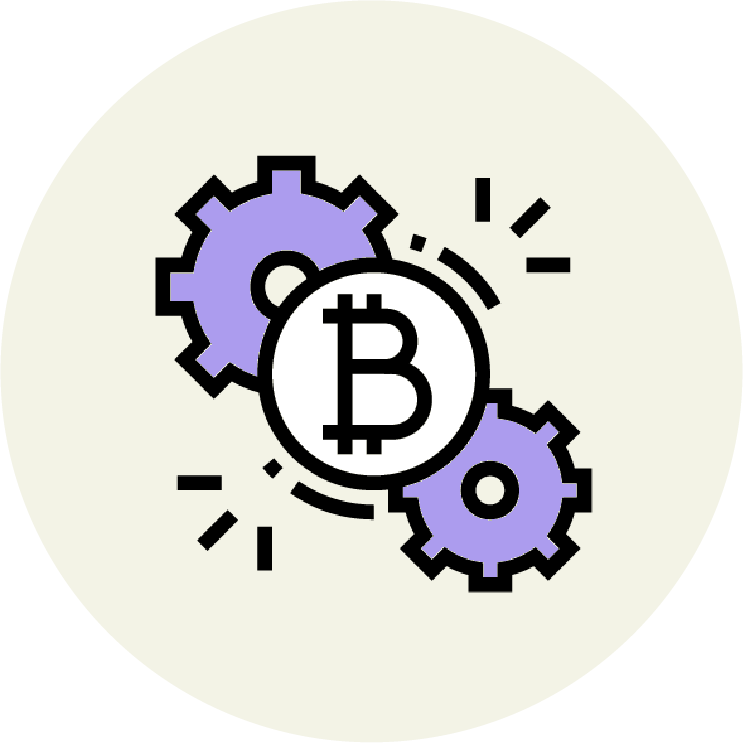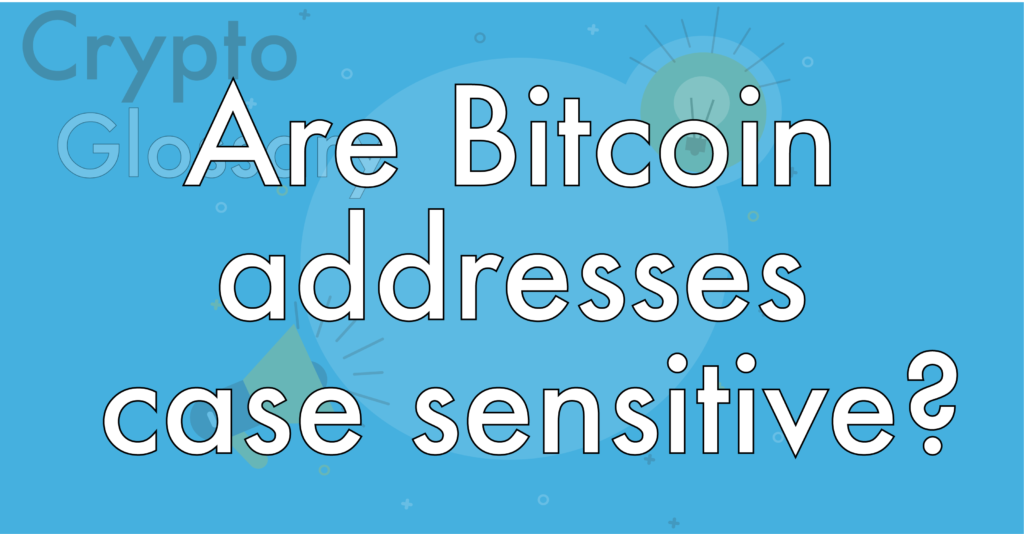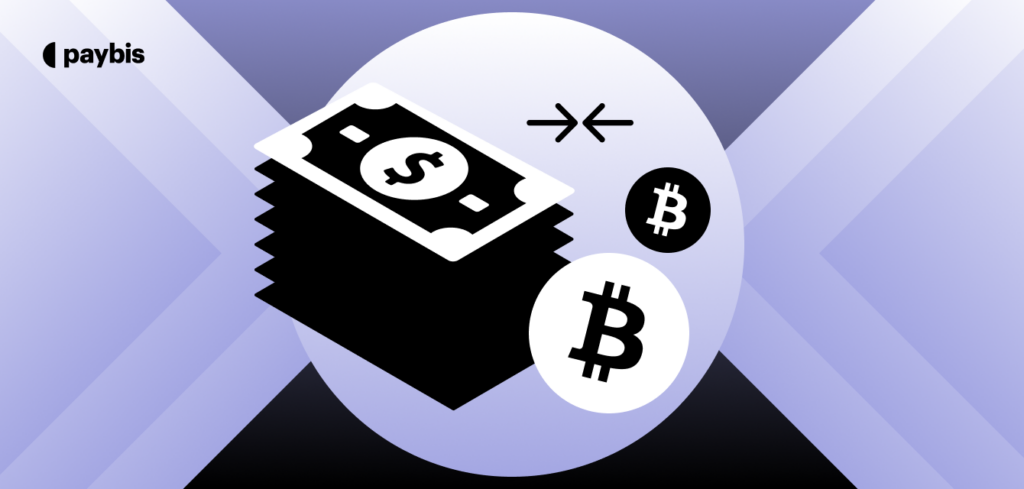2024 Bitcoin Halving
Satoshi Nakamoto introduced the reward halving. This essentially stands for the slashing of miners’ rewards in half, approximately once every 4 years. Every time 210,000 blocks are mined, the reward decreases and a new “reward era” starts.
Bitcoin, the world’s first and most well-known cryptocurrency, underwent the 4th halving event on April 19, 2024. During this halving event, the BTC reward amount was cut by 50%, resulting in 3.125 BTC per mined block.
The Bitcoin halving is a four-year phenomenon that plays a crucial role in BTC price by tipping the scales of supply and demand. If you are new to crypto you might have many questions about this upcoming event.
Table of contents
Why Was Bitcoin Halving Created?
The introduction of Bitcoin halving by Satoshi Nakamoto is a stroke of genius that reflects a deep understanding of economic principles and a visionary approach to creating a sustainable digital currency.
Traditional fiat currencies can be printed endlessly. As a result their value, i.e., purchasing power, reduces. By doing this, they enter an inflationary economic model where they incentivize spending now rather than later. This system is steered towards high-leverage practices such as debts, loans, and credit.
The inflationary model is detrimental, especially in the long term. The value of people’s savings reduces over time and, when retirement finally comes, their lifelong savings are worth only a fraction of their original value.
Let’s take the buying power of $100 USD as an example. Due to inflation, that amount of money in 1970 would have approximately the same purchasing power of $791 in 2024.
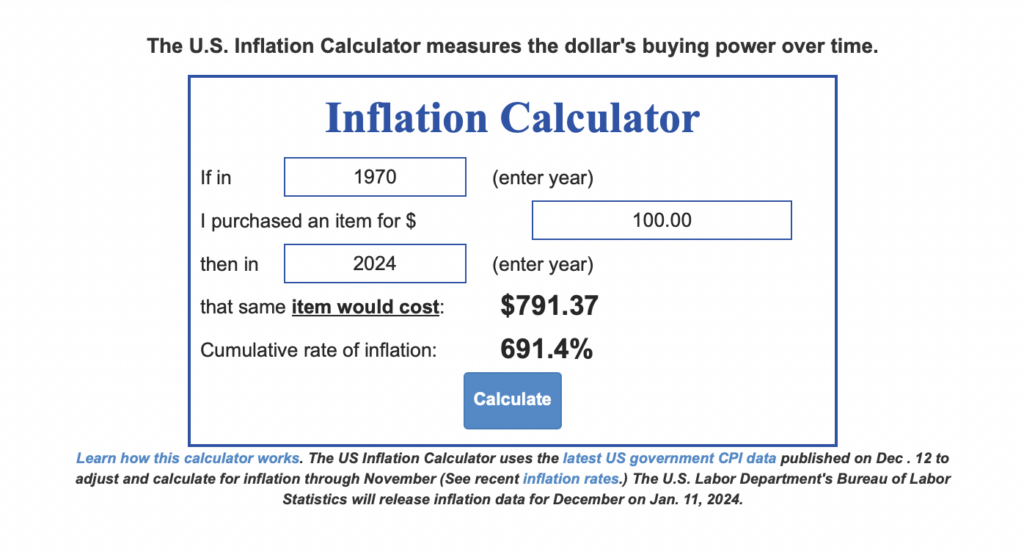
You can check this on your own for any dates with an inflation calculator.
That is why Satoshi Nakamoto introduced the Bitcoin halving principle — similar to the way precious metals like gold are mined. Just as gold becomes scarcer and harder to mine over time, so too does Bitcoin. Satoshi ingeniously implemented this feature to make Bitcoin a deflationary asset.
As such, he set some ground rules (coded within the Bitcoin blockchain) to render the cryptocurrency resistant to inflation.
Bitcoin Halving: What Is It and How Does It Work?
Satoshi Nakamoto introduced the reward halving. This essentially stands for the slashing of miners’ rewards in half, approximately once every 4 years. Every time 210,000 blocks are mined, the reward decreases and a new “reward era” starts.
There have been 3 more halvings in the past, and we are now in the 4th reward era, where one mined block grants 6.25 BTC.
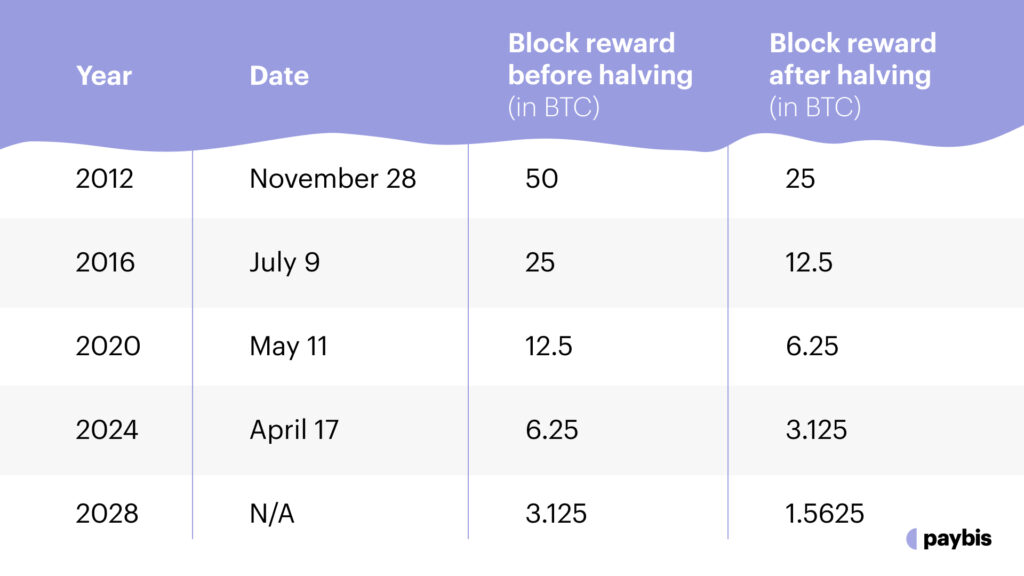
Bitcoin Fighting Inflation
In a deflationary economic model, the issuance of new currency lessens over time, which means that it will be worth more later on. Taking into consideration the scarcity, mining difficulty, and the controlled supply of Bitcoin, what you get is a foolproof model of a commodity that increases in value over time.
Satoshi Nakamoto explained the idea behind the halving:
“If the coinage does not increase as fast as demand, the opposite of inflation will occur, and early holders of the currency will see its value increase. In an economy, money has to be distributed and produced somehow, and a constant rate seems to be the best formula.”
There have been criticisms of this model in the past. Wouldn’t this create another problem, namely collecting Bitcoin and never actually spending it? This question often comes up:
“Why would anyone want to spend Bitcoin, if they are certain that it will be worth more in the future?”
The answer is quite simple, really. Although deflation discourages spending, you can never eliminate the need for it. Basic necessities are not something we can put aside. Commodities and luxuries become a timing preference instead of an artificial need. People get to choose if they want to spend now or later.
As such, one can use Bitcoin both as a store of value and as a currency. Only, instead of its value decreasing and stagnating over time, as is the case with government-based currencies, Bitcoin increases its worth over time, leading to increased mainstream adoption.
Useful links
- Bitcoin 2024 Price Prediction
- How Many Bitcoins Are Left Today
- Is it too Late to Buy Bitcoin?
- How Much Does it Cost to Buy Bitcoin Right Now
Previous Bitcoin Halvings and Their Impact
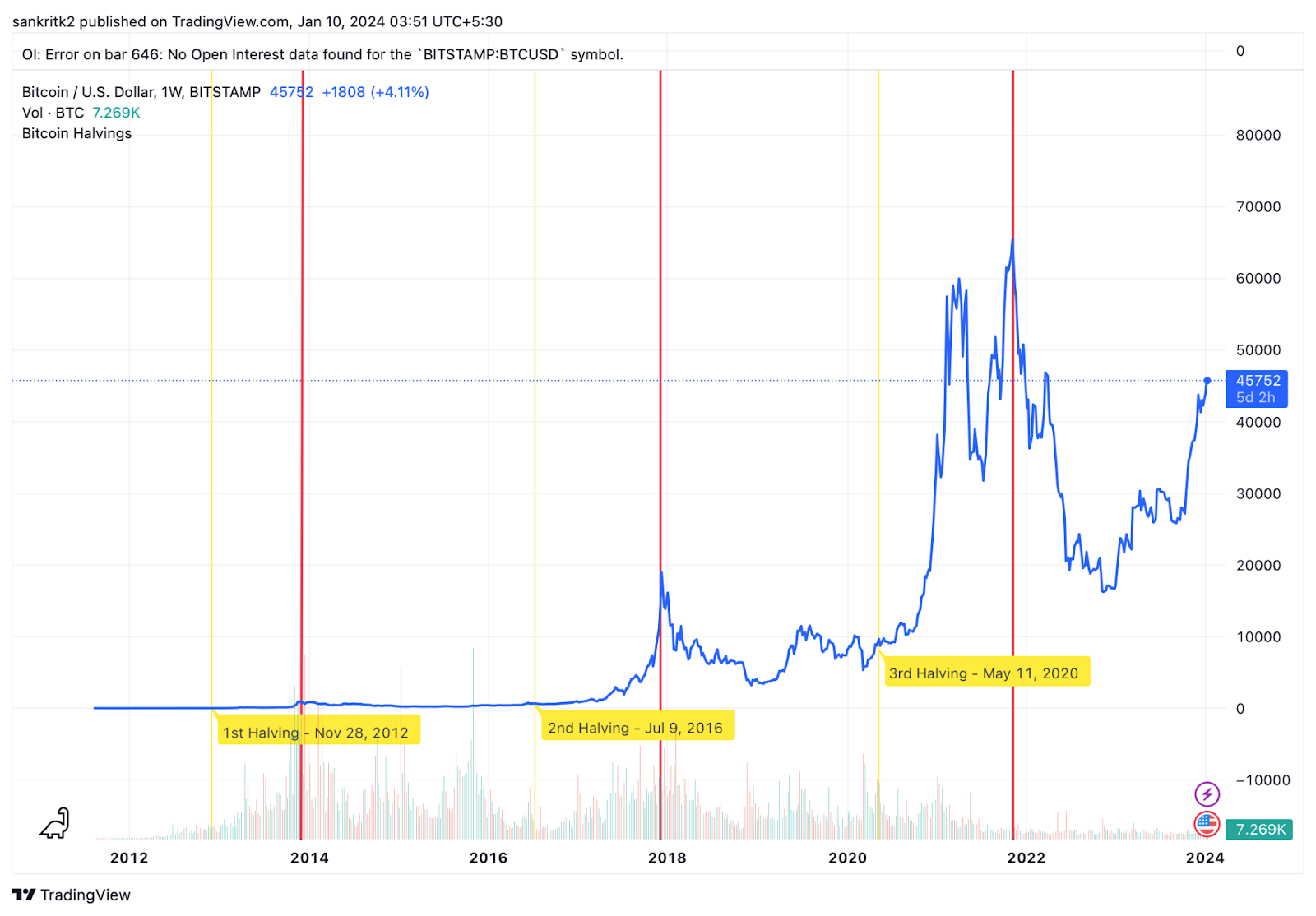
The first Bitcoin halving occurred on the 27th of November 2012.
Block 210,000 was solved by a Radeon 5800 GPU, one of the most popular GPUs at that time used for mining. The graphics card was later sold at a significant markup to Chaang Noi, an early Bitcoin investor.
In the following year, market prices of the leading cryptocurrency skyrocketed. A new peak price was reached about one year after the halving took place. The price of Bitcoin increased from $12 to a new high of $1,120. The price was corrected in 2014 and a long bearish market installed some doubt in the investors minds. Market sentiment was at a low point for certain, as Bitcoin’s price fell in the $300 range, retracing by more than 70%.
And then, the second halving happened. It was this halving of July 2016 that opened the path for the crazy 2017 bull run of Bitcoin where we saw prices reach new highs once again. From $657 at the moment of the second halving to a still unbeaten record of $19,780 by December 2017.
Finally, the third halving was on May 11, 2020, and BTC reached an ATH of over $69,000!
Here’s a general analysis of how Bitcoin’s price has typically behaved around its halving events:
- Pre-Halving Period: Leading up to a halving, there’s often a significant amount of speculation and interest in Bitcoin. This can drive the price up as investors anticipate a reduction in future supply. Historically, there have been increases in Bitcoin’s price months before the halving event.
- Halving Event: On the day of the halving, the immediate price reaction can be varied. While some investors might buy into the hype, expecting immediate gains, others might sell, having anticipated the event as a peak. The actual day of the halving may not see as dramatic a price movement as the periods leading up to and following it.
- Post-Halving Period: After the halving, the reduced supply of new Bitcoins can lead to a supply-demand imbalance, especially if demand remains strong. Historically, significant price increases have occurred in the year following a halving.
Bitcoin Halving 2024: Fourth BTC Halving
The fourth Bitcoin halving is expected to occur around April 17, 2024, at block number 840,000. During this halving, the reward for Bitcoin miners will be reduced from 6.25 BTC to 3.125 BTC per block.
Historical Price Trends and Predictions
Looking at the history of Bitcoin halvings and their impact on price:
- First Halving (Nov 28, 2012): The BTC price on the day of the first halving was $12.35. The highest price reached during that cycle was approximately $1,170 in November 2013.
- Second Halving (July 9, 2016): The price at the time of the second halving was $640. The highest price in this cycle reached around $19,650 in December 2017.
- Third Halving (May 11, 2020): The price at the time of this halving was $8,600, with the highest price in the cycle reaching about $67,500 in November 2021.
Based on past trends, Bitcoin has experienced significant increases in price following each halving. However, it’s crucial to note that past performance is not necessarily indicative of future results, and the cryptocurrency market is known for its volatility.
Many in the crypto community anticipate another bull run following the 2024 halving, though the extent and duration of any such run are uncertain. It’s also possible that expectations of a post-halving bull run might already be factored into the market.
Bitcoin Halving “Moons” on Google Trends
The public awareness of the upcoming Bitcoin halving massively bigger than in the past. Interest for the special event has been steadily increasing in the past few months and is expected to surpass all previous monthly search volumes on Google.
Let’s take a look at Google trends:
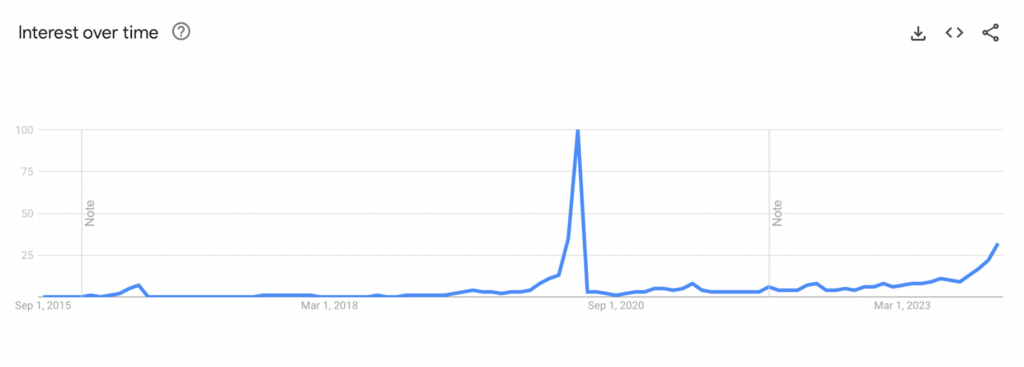
The graph indicates that while “bitcoin halving” is a specialized topic with generally low constant interest, it gains significant attention around the time the halving event occurs, as indicated by the sharp peaks.
The recent rise in interest could suggest increased discussions or speculation about the upcoming halving event, changes in the Bitcoin protocol, or shifts in the cryptocurrency market dynamics.
How to Trade Your Bitcoin Based on the Upcoming Halving Event
Looking at historical patterns, there are two clear trading paths you can take when considering the Bitcoin halving of 2024.
- You can buy Bitcoin directly from an exchange, like Paybis,
- or speculate on the price of the cryptocurrency using derivatives.
The latter is an advanced trading method reserved for very experienced traders. It’s quite similar to gambling, as you only use your money to speculate whether the coin’s price will increase or decrease.
That said, if there was ever a low-risk investment opportunity, it has always been close to halving. That is shortly before (1-4 months), and up to a year after the event occurs.
As such, it might be a good idea to buy your coins right now and hold onto them for a longer timeframe. It is also a great opportunity to buy Bitcoin at a low price and sell at the top, increasing your position over a longer timeframe.
However, this is also speculation as past performance does not guarantee future results. We do not provide any financial advice and request you to do your own research before investing.
Conclusion
Bitcoin is a cryptocurrency that, by design, increases in value over time. By coding the halving mechanism into the network, inflation remains in check, and scarcity increases over time.
Here is what you should remember:
- When BTC halving occurs, mining rewards are reduced to half.
- Less issued Bitcoins lead to an increase in scarcity and value.
- The mining difficulty increases as more miners enter the network.
- Bitcoin halving has always been a prerequisite for an increase in the coin’s value.
Hopefully, the Bitcoin halving of 2024 will act as another milestone in the maturity of the cryptocurrency market. At this moment, there are clear signs of recovery.
Disclaimer: Don’t invest unless you’re prepared to lose all the money you invest. This is a high‑risk investment and you should not expect to be protected if something goes wrong. Take 2 mins to learn more at: https://go.payb.is/FCA-Info
